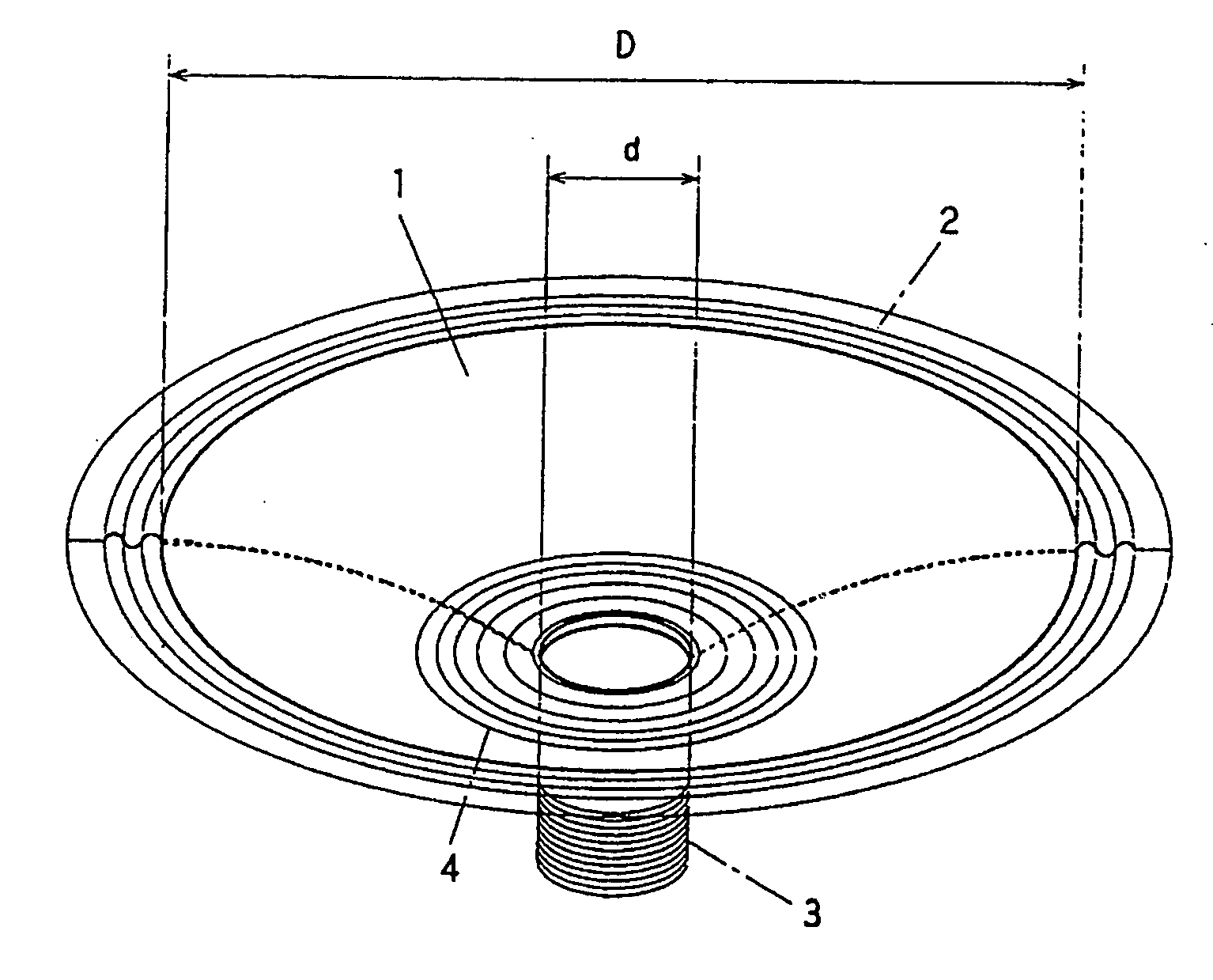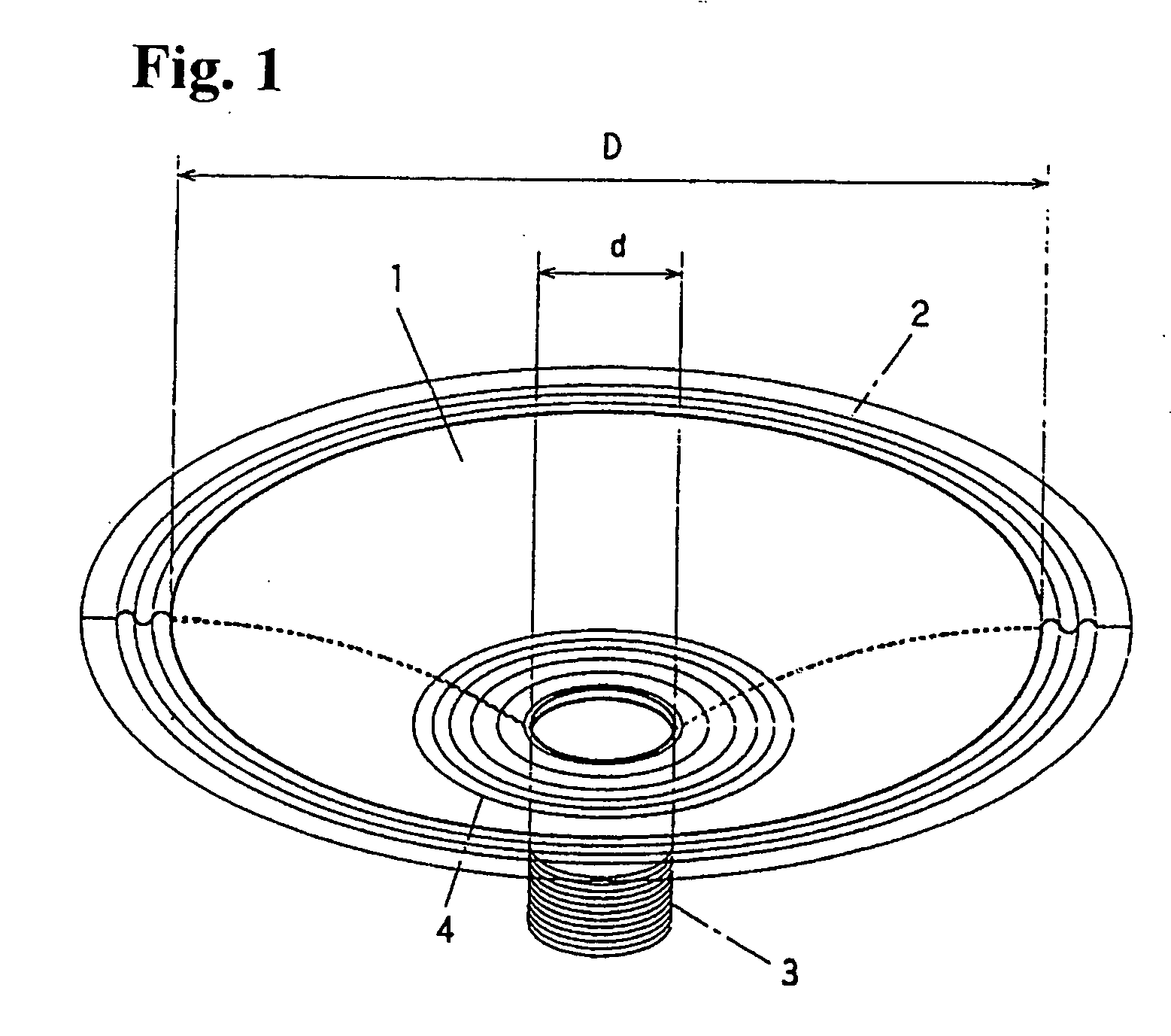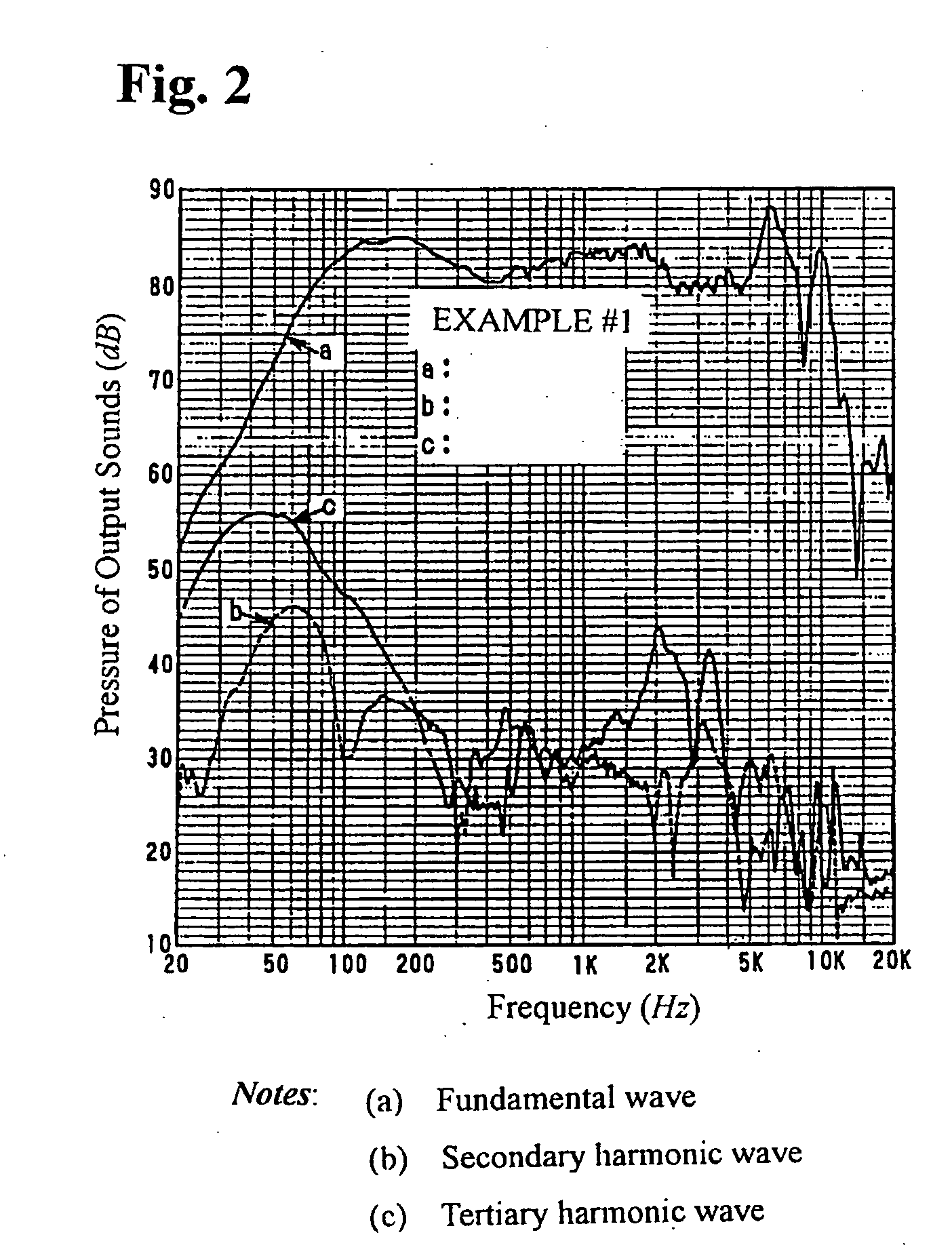Speaker Diaphragm
a diaphragm and speaker technology, applied in the direction of diaphragm construction, fibre diaphragm, non-planar diaphragm/cone, etc., can solve the problems of partial cancellation of the sound from said portions, poor regenerated sound quality, and elasticity of ordinary diaphragm per s
- Summary
- Abstract
- Description
- Claims
- Application Information
AI Technical Summary
Benefits of technology
Problems solved by technology
Method used
Image
Examples
examples
[0021]FIG. 1 illustrates EXAMPLE 1 of the present speaker diaphragm shown in its perspective outlook. The diaphragm 1 provided as the EXAMPLE 1 is of the so-called cone type having a conical appearance with a somewhat curved generatrix. Its outer periphery is connected by a discrete edge 2 (usually called free edge) to the inside of a frame (not shown). Attached by an annular connector to the central portion of this diaphragm is a voice coil 3, and this connector is a damper 4 that is likewise fixed on the inside of said frame.
[0022]The speaker diaphragm 1 of EXAMPLE 1 is composed of: (1) a polypropylene resin as the non-chlorinated resin, (2) a wood powder as the cellulose powder having an average particle size of 200 μm, and 100 weight parts of this powder having been surface-esterified using 10 weight parts of maleic anhydride, and (3) benzoyl peroxide as the organic peroxide. 49.5% by weight of the polypropylene resin, 50% by weight of the wood powder and 0.5% by weight of benzo...
PUM
| Property | Measurement | Unit |
|---|---|---|
| Temperature | aaaaa | aaaaa |
| Temperature | aaaaa | aaaaa |
| Fraction | aaaaa | aaaaa |
Abstract
Description
Claims
Application Information
 Login to View More
Login to View More - R&D
- Intellectual Property
- Life Sciences
- Materials
- Tech Scout
- Unparalleled Data Quality
- Higher Quality Content
- 60% Fewer Hallucinations
Browse by: Latest US Patents, China's latest patents, Technical Efficacy Thesaurus, Application Domain, Technology Topic, Popular Technical Reports.
© 2025 PatSnap. All rights reserved.Legal|Privacy policy|Modern Slavery Act Transparency Statement|Sitemap|About US| Contact US: help@patsnap.com



